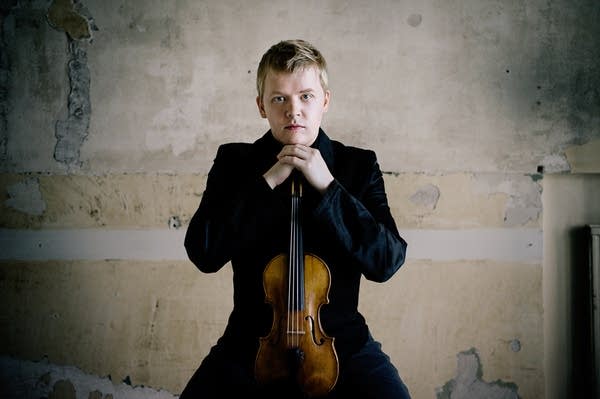
It's happened to every bassoonist at least once: You've just played a concert and an audience member, full of exuberance, comes up to you and says,
"I just love the sound of the oboe!"
It doesn't matter that there wasn't an oboist within miles, or that maybe you just played a bassoon concerto; there is still that awkward confusion.
Maybe it's an onomatopoeic thing — "oboe-sounds-low" — or a confusion between these members of the double-reed family. Oboes, after all, are often confused with clarinets since they are of a similar shape and made of similar wood. But the bassoon, with its unique shape and ringed bell sticking out above the woodwind section, makes a unique visual statement. And if you are of the age to have grown up with Warner Brothers or Hanna Barbera cartoons you certainly know the sound — even if you didn't know it was a bassoon!
So let's take a deeper look into the history and mechanics of what some may consider an orchestral oddball.
Background
The bassoon's shape, eight feet of maple doubled back on itself, gave the instrument its Italian name, fagotto, meaning "a bundle of sticks." You could almost imagine a long-ago bassoonist taking his instrument apart, tying it up with twine, and slinging it over his shoulder on his way to the next gig.
The bassoon started out as the bass to the oboe, which itself started out as the shawm, a Renaissance instrument that descended from any number of Far- and Middle Eastern double-reed instruments (think the sound of the snake charmer). In the 1600s, the bassoon was essentially an instrument that played the bass line, although by the time of Antonio Vivaldi, the bassoon had progressed to the point where Vivaldi composed 38 concerti for the instrument, second only to the violin in his solo compositions.
With the advent of the classical period, the bassoon came into its own as a solo instrument. Haydn, Mozart and Beethoven all give the bassoon prominent lines in their compositions. Many composers wrote concerti for it, and it was included in many chamber music works. The bassoon was prized not only for its ability to play a solo line but also for the fact that it could blend so well and easily with other instruments. Unfortunately, as orchestras got bigger (and louder), the relatively soft sound of the bassoon struggled to keep up. Berlioz often wrote for four bassoons — not so much because of the visual effect, but because he couldn't hear the darned thing!
Variations
Many manufacturers attempted to come up with a new design to cope with the need for a louder instrument. In fact, a man named Adolphe Sax invented a new instrument to replace the now-too-soft bassoon and oboe; although it didn't catch on in orchestras, it has had a very successful life as the saxophone. But as this example illustrates, most of these attempts to improve the instrument resulted in more volume — but they just didn't sound like bassoons.
Part of the reason for the bassoon's characteristic sound is that its sound-producing holes are drilled at an angle that places them in a position where they can be covered by your fingers, making the holes elliptical. Most other woodwind instruments have round holes drilled straight into the bore that are covered by keys if the fingers can't reach them.

An attempt in Germany in the 1830s to increase the volume of sound and to produce a more even scale gave us the bassoon most of us know today. But a lineage of the old bassoon lived on in France and is still played in that country — it's known as the "French bassoon" or basson (just one "o"). It has a much different sound quality than the German instrument but is the sound that composers such as Ravel, Debussy and Stravinsky had in mind while composing. If you hear a recording of a French orchestra — especially one made before 1970 — and you hear something that isn't quite what you'd expect, you're probably hearing a French bassoon.
Playing
No matter the nationality, one of a bassoonist's biggest concerns is reeds. Our lives are tied up in tying up two thinly shaved pieces of bamboo. The process starts with buying the cane, which is primarily grown in a region of southern France; it then goes through many stages of processing by machine and by hand until we have a bassoon reed. The reed is susceptible to weather changes, altitude, and even varying conditions on the stage. Reeds need to be kept wet, which is why if you look carefully at the bassoon section when you're at a concert, you can see trays attached to our music stands along with small containers of water, as well as tools such as knives and files which are used to adjust the reeds when they aren't working the way we would like … which is often. Most professional bassoonists spend as much time — or more — making reeds as they do practicing their instrument.
In order to make the bassoon portable (imagine trying to get on a plane these days with something that looks like a wooden bazooka), the bassoon is divided into five different sections that fit into something about the size of a violin case. The final piece to be assembled is the bocal, a curved, metal tube that holds the reed. Bocals are to bassoonists what bows are to string players — they can make a huge difference in how the instrument plays. Bassoonists are constantly searching for the perfect match of bocal and instrument, and often a bocal that doesn't work on one instrument can be great on another.

The bassoonist's life in the orchestra is generally one of a supporting role — the bassoon's dark sound lends itself to blending with the other woodwinds and horns, reinforcing the cellos and basses and maybe even doubling a melodic line with the violins. It's perhaps that chameleon-like quality which has kept the bassoon from being as easily recognized as some of the other instruments. But if you listen closely, you can hear the many characters of the bassoon — everything from the comical, marching broomsticks in Dukas' "Sorcerers Apprentice" to the mournful soliloquies in Shostakovich's symphonies.
And how do we answer when we're told, "I just love the sound of the oboe"?
"Thank you very much — I'm glad you enjoyed it!"
Norbert Nielubowski is bassoonist and contrabassoonist with the Minnesota Orchestra. He teaches at the University of Minnesota and is also the co artistic director of The Musical Offering.
Listen to the Minnesota Orchestra broadcast on Classical MPR on Friday, Nov. 21, at 8 p.m., to hear a live performance of Christian Ludwig Dietter's Concerto for Two Bassoons.
Love the music?
Show your support by making a gift to YourClassical.
Each day, we’re here for you with thoughtful streams that set the tone for your day – not to mention the stories and programs that inspire you to new discovery and help you explore the music you love.
YourClassical is available for free, because we are listener-supported public media. Take a moment to make your gift today.











